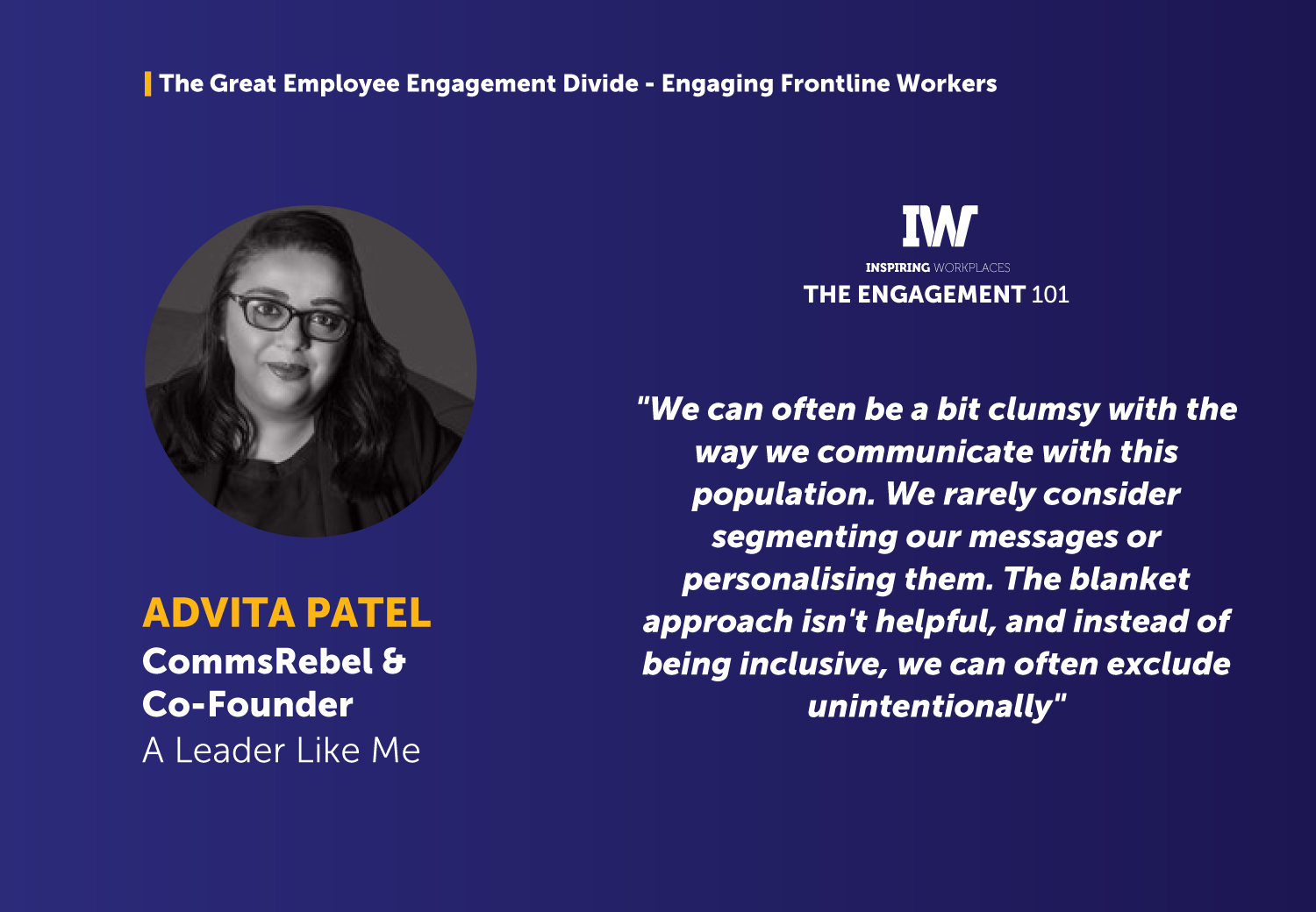
12th November 2021
The Great Employee Engagement Divide – Engaging Frontline Workers – Advita Patel

This snippet is part of our Ebook The great Employee Engagement Divide – Engaging Frontline Workers. Advice and suggestions from our Top 101 influencers. You can download the full eBook with all the advice here.
Advita Patel, CommsRebel & Co-Founder, A Leader Like Me
With so much attention and consideration shown to people returning to the office, there’s no wonder that frontline workers engagement is declining. This population rarely has a choice on how they should set their hours, where they should work and if they can work flexibly or not.
We can often be a bit clumsy with the way we communicate with this population. We rarely consider segmenting our messages or personalising them. The blanket approach isn’t helpful, and instead of being inclusive, we can often exclude unintentionally. Most people understand that there will be different ways of working for various parts of the organisation, but the last thing they need is to be involved in conversations that don’t apply to them.
Of course, it’s almost impossible to give frontline workers the flexibility afforded to those who work in office-based roles. But do consider what additional things can you introduce so this population is treated fairly. For example, you could introduce regular pulse-checks to make sure people are doing ok or encourage senior leaders to ‘walk the floor’ more frequently so they are more visible. Also, it’s essential to ensure that frontline workers have the opportunity to be heard and a place where they can feedback on any questions or concerns that they may have. Feedback can be face-to-face or online – but whatever you decide, make sure it’s accessible, and feedback isn’t ignored.
If you’re not sure where to start or what the key challenges are, then check what the data in the organisation is telling you and then speak with some frontline workers to understand how you can support them further.

